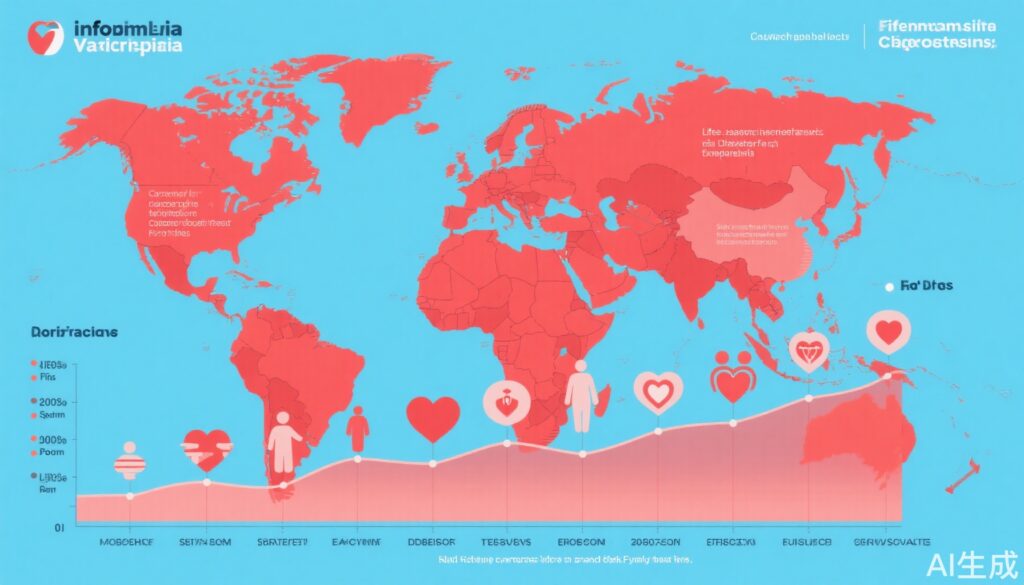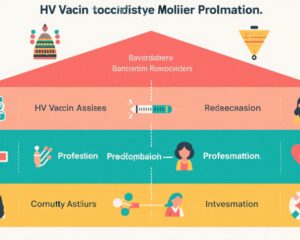Highlights
- Absence of five classic cardiovascular risk factors at age 50 confers over a decade longer life expectancy free from cardiovascular disease and death compared to presence of all five.
- Modification of hypertension and smoking in midlife (ages 55-60) associates with the greatest additional life-years free from cardiovascular disease and all-cause mortality, respectively.
- Global harmonized data from 2,078,948 participants across 39 countries and 6 continents provides unprecedented global generalizability.
- Integration with broader literature highlights the critical importance of early and sustained cardiovascular risk factor management, including lifestyle and pharmacologic interventions.
Background
Cardiovascular disease (CVD) remains the leading cause of death worldwide, accounting for nearly half of non-communicable disease mortality. Despite substantial advances in treatment, prevention of incident CVD is paramount to reduce the global burden. Classic modifiable cardiovascular risk factors—arterial hypertension, hyperlipidemia, abnormal body weight (underweight, overweight, obesity), diabetes mellitus, and cigarette smoking—collectively account for approximately 50% of the global CVD burden. However, how the combined presence or absence of these risk factors impacts lifetime cardiovascular disease risk and all-cause mortality has been inadequately quantified on a global scale. Moreover, understanding the potential benefits of midlife risk factor modification is critical for informed clinical and public health strategies.
Key Content
Methodological Framework of the Global Cardiovascular Risk Consortium Study
The landmark analysis by the Global Cardiovascular Risk Consortium harmonized individual-level data from 2,078,948 participants across 133 prospective cohorts, encompassing 39 countries on 6 continents. Participants were followed longitudinally, with baseline cardiovascular risk factor assessment at age 50 years. The five well-established modifiable risk factors evaluated included arterial hypertension, hyperlipidemia, body mass index categories (underweight, overweight, obesity), diabetes mellitus, and smoking status. Lifetime cardiovascular disease risk and all-cause mortality risk were projected to age 90 years using robust survival statistical methodologies accommodating competing risks. Risk factor trajectories were modeled to determine the impact of midlife modification (ages 55 to <60) on additional life-years free of event.
Lifetime Cardiovascular Disease and Mortality Risk According to Risk Factor Burden
For participants with all five risk factors present at 50 years, lifetime risk of developing cardiovascular disease was estimated at 38% (95% CI, 30–45) for men and 24% (95% CI, 21–30) for women. Contrastingly, participants free of these risk factors demonstrated significantly lower lifetime risk. The life-years free of cardiovascular disease were markedly prolonged by 13.3 years (95% CI, 11.2–15.7) in women and 10.6 years (95% CI, 9.2–12.9) in men when comparing those without any risk factors to those with all five. Similarly, life expectancy free from death was increased by 14.5 years (95% CI, 9.1–15.3) in women and 11.8 years (95% CI, 10.1–13.6) in men.
Impact of Midlife Risk Factor Modification
Among risk factors, modification of hypertension at ages 55 to less than 60 years was associated with the greatest gain in life-years free of cardiovascular disease, suggesting targeted hypertension control in midlife has significant preventive potential. Similarly, within the same age interval, smoking cessation was most strongly associated with additional life-years free of death from any cause, underscoring the profound longevity benefit of quitting smoking in midlife. These data highlight the critical window for intervention to modify risk and extend healthy lifespan.
Integration with Complementary Evidence
Additional systematic reviews and meta-analyses emphasize the widespread prevalence of these risk factors globally, with hypertension affecting nearly 30% of adults and overweight/obesity impacting over 17%. Behavioral interventions to increase physical activity and healthy diet have demonstrated modest but consistent improvements in blood pressure and lipid profiles, further corroborating the value of early preventive strategies.
Pharmacological advances such as sodium-glucose cotransporter 2 (SGLT-2) inhibitors and glucagon-like peptide-1 (GLP-1) receptor agonists have been shown to reduce cardiovascular events in type 2 diabetes mellitus independent of glycemic control, improving cardiovascular outcomes and survival. Bariatric surgery studies illustrate marked reductions in mortality in obese patients, particularly those with diabetes, reflecting the multiplicative impact of body weight and metabolic control on cardiovascular prognosis.
Sex-specific analyses reveal women may experience differential risks and benefits in cardiovascular disease manifestations and outcomes, including elevated stroke risk associated with diabetes. Emerging biomarkers and genomic risk scores provide additional stratification tools to tailor prevention and therapy.
Expert Commentary
The consortium study offers a robust, globally representative estimate of how classical cardiovascular risk factors translate into lifetime disease and mortality burden. The strength lies in its unprecedented size, geographic diversity, and harmonized methodology. Its findings reinforce the paradigm that cumulative burden of risk factors substantially accelerates cardiovascular morbidity and mortality.
However, several considerations merit attention. First, residual confounding and unmeasured factors (e.g., socioeconomic status, environmental exposures) may influence risk estimates. Second, the study focuses on traditional risk factors; the roles of emerging risks such as psychosocial stress, sleep disturbances, and air pollution require integration in future models. Third, genetic predisposition and precision medicine approaches might further refine lifetime risk forecasting.
From a clinical standpoint, the evidence emphatically supports intensifying efforts in midlife cardiovascular risk modification, highlighting hypertension and smoking cessation as high-impact targets. Broader public health policy and preventive healthcare prioritizing early screening and sustained management of risk factors could achieve significant reductions in global CVD burden.
Conclusion
The Global Cardiovascular Risk Consortium study robustly quantifies the profound impact of five major cardiovascular risk factors on lifetime cardiovascular disease risk and all-cause mortality, indicating a life expectancy reduction exceeding a decade when all are present by age 50. Midlife modification, particularly of hypertension and smoking, confers substantial gains in cardiovascular health and longevity, reinforcing the window of opportunity for preventive interventions. Integration of this evidence with evolving pharmacological and lifestyle strategies, along with personalized risk stratification, is paramount to curb the global cardiovascular disease epidemic.
References
- Global Cardiovascular Risk Consortium; Magnussen C, Alegre-Diaz J, et al. Global Effect of Cardiovascular Risk Factors on Lifetime Estimates. N Engl J Med. 2025 Jul 10;393(2):125-138. doi: 10.1056/NEJMoa2415879. PMID: 40162648.
- Magliano DJ, Johnson JA. Global prevalence of cardiovascular risk factors based on the Life’s Essential 8 score: an overview of systematic reviews and meta-analysis. Cardiovasc Res. 2024 Feb 27;120(1):13-33. doi: 10.1093/cvr/cvad176. PMID: 38033266.
- Zinman B, Wanner C, et al. Empagliflozin, Cardiovascular Outcomes, and Mortality in Type 2 Diabetes. N Engl J Med. 2015;373(22):2117-2128. doi:10.1056/NEJMoa1504720.
- Lehmann R, Klöting N, et al. Association of Metabolic-Bariatric Surgery with Long-Term Survival in Adults with and without Diabetes: A One-Stage Meta-Analysis. Lancet. 2021 May 15;397(10287):1830-1841. doi: 10.1016/S0140-6736(21)00591-2. PMID: 33965067.
- WHO Global Status Report on Noncommunicable Diseases 2014. Geneva: World Health Organization; 2014.



